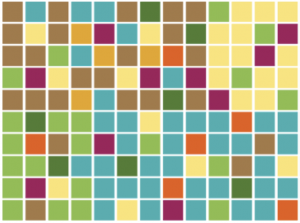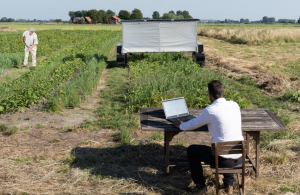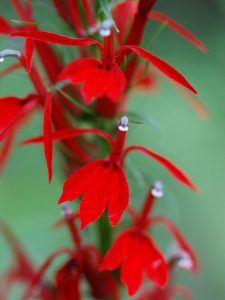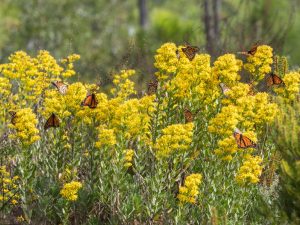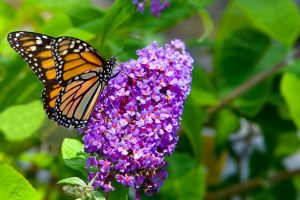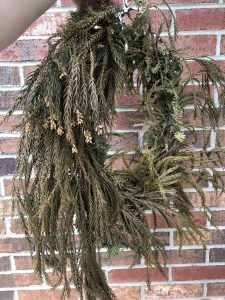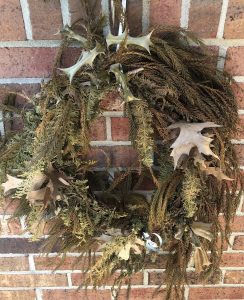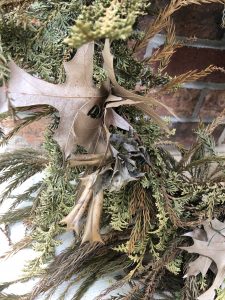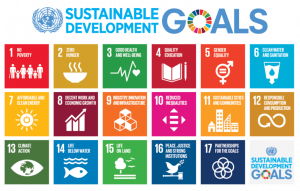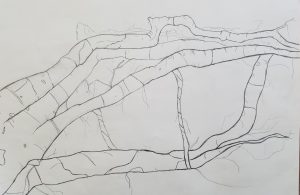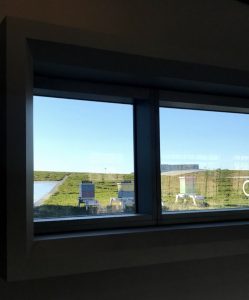-Olivia Pulliam
Ever since I can remember, I have had bird feeders everywhere within sight. My grandmother taught me about the beauty of birds. They have the freedom to fly anywhere, yet they stay grounded in one territory for most of the year. I am fascinated by their choices. It brings me peace to just sit and watch them.
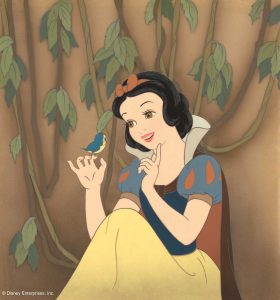
Since being at Furman, I have become to be known as Snow White or the Swamp Queen. I take pride in each of these titles. Like Snow White, I feel a connection towards nature. I believe it is my duty to educate
Right now, I have three bird feeders outside the Cabin. Each feeder has a different purpose.
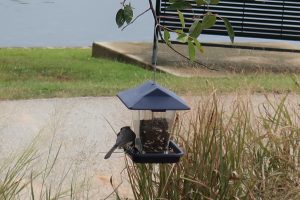
First, I have what is called a hopper feeder. This is a feeder with a middle storage system that dispences the seeds at the base through openings. This feeder is easy for birds and squirrels to eat from. This type of bird feeder is great for beginners because it is easy to refill and will hold most types of seeds.
The bird at the feeder is a Tufted Titmouse. His name is Peter because his call sounds like peter-peter-peter.
.
.
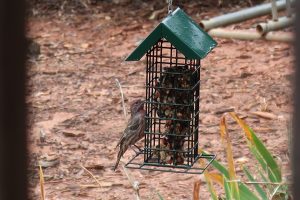
Next, I have a seed cake feeder. These feeders are typically metal cages that hold the seed cakes. As you can see in this picture, the seeds are all stuck together. This is because instead of loose seeds, this feeder is filled with a type of condensed cake that is typically filled with berries and seeds.
The bird shown in the picture on the left is a House Finch. It has a unique stocky beak that is characteristic of finches. Her name is Darla.
.
.
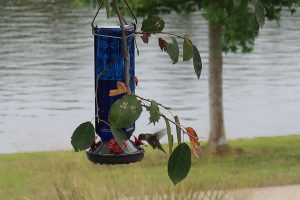
Finally, I have a nectar feeder. These feeders are targetted toward hummingbirds. They are typically a glass bottle attached to fake flowers. The opening in these flowers is only big enough for a hummingbird’s slim beak. The flowers are typically red. Hummingbirds can see color and are most attracted to red.
The bird in the picture to the left is a rufous hummingbird. His name is Buzz-Lightyear.
.
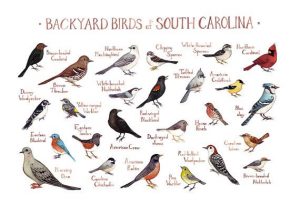
How to Make Bird Food
Nectar: When making the nectar you need 1 part sugar and 4 parts water. It is important to change the nectar out every four or five days because it can mold. Mold is harmful to all birds.
Bird Cake:
- ¾ cup white or wheat flour
- 3 cups bird seed mix
- ½ cup dried cranberries
- ½ cup raw peanuts
- ½ cup water (boiling)
- ¼ ounce unflavored gelatin
- 3 Tbsp. light corn syrup
Bird Seed:
Different types of birds are attracted to different seeds and berries. If you are trying to attract a certain type of bird you can use food that they prefer. Sunflower seeds are liked by most birds so they are a great seed to use in every feeder.
You can make bird food out of kitchen scraps too. Here is what not and what you can safely feed birds.
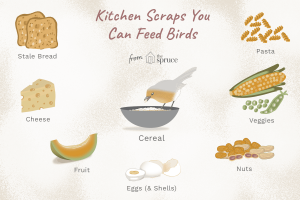
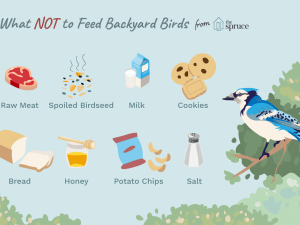
Sources:
Ta. (2019, March 05). Types of bird feeders. Retrieved September 26, 2020, from https://www.welcomewildlife.com/types-of-bird-feeders/
1, J. (2019, July 17). How To Make Your Own Customized Bird Seed Blend! Retrieved September 26, 2020, from https://www.onegoodthingbyjillee.com/how-to-make-your-own-customized-bird-seed-blend/
Mayntz, M. (n.d.). What Kitchen Scraps Can You Feed Birds? Retrieved September 26, 2020, from https://www.thespruce.com/kitchen-scraps-to-feed-birds-386571

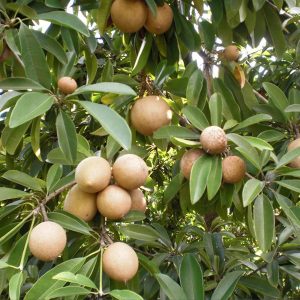
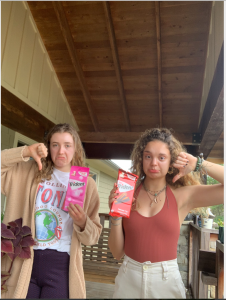
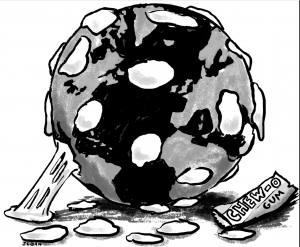
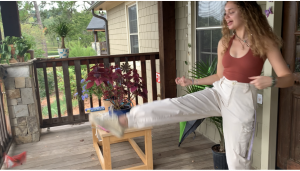
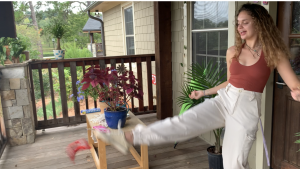
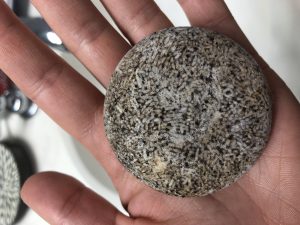
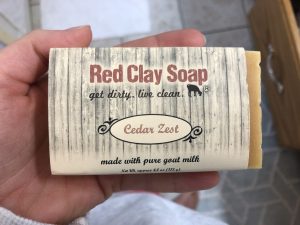 This sweet soap contains up to 25% goat milk in each bar. The great thing about goat milk is that it is loaded with natural acids, vitamins and minerals making it the perfect exfoliator and moisturizer. Again, a simple switch but one that cumulatively makes a significant difference. Bar soaps and bar shampoos use little to no packaging and do not contain harmful chemicals that other liquid alternatives may. One small step towards less waste, a successful step towards sustainability.
This sweet soap contains up to 25% goat milk in each bar. The great thing about goat milk is that it is loaded with natural acids, vitamins and minerals making it the perfect exfoliator and moisturizer. Again, a simple switch but one that cumulatively makes a significant difference. Bar soaps and bar shampoos use little to no packaging and do not contain harmful chemicals that other liquid alternatives may. One small step towards less waste, a successful step towards sustainability.